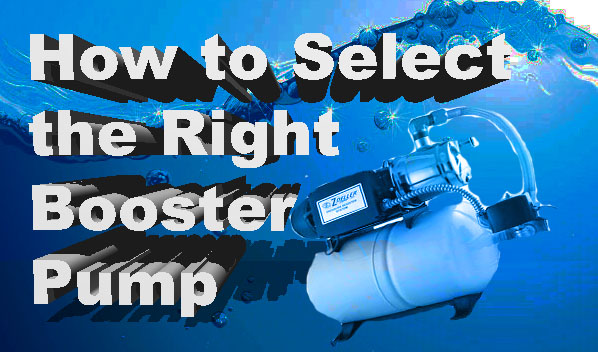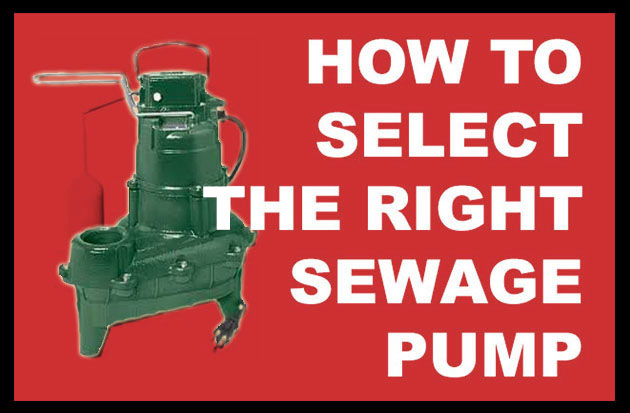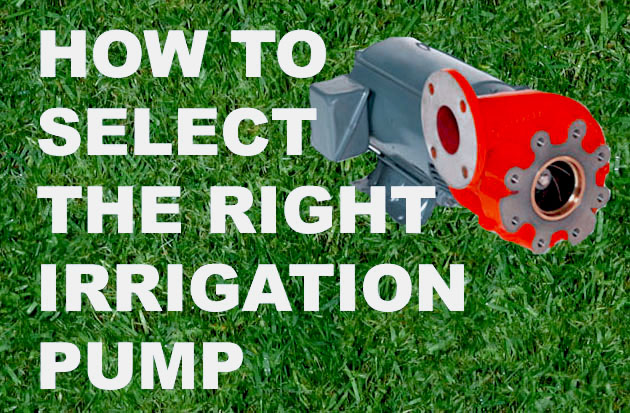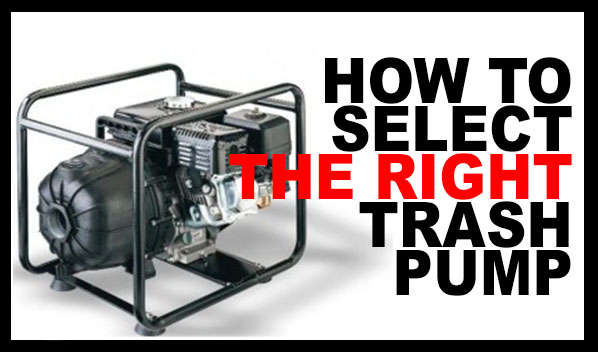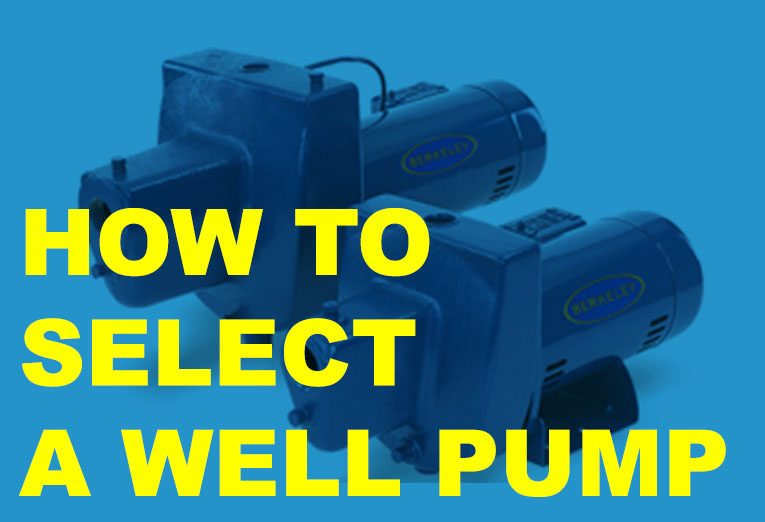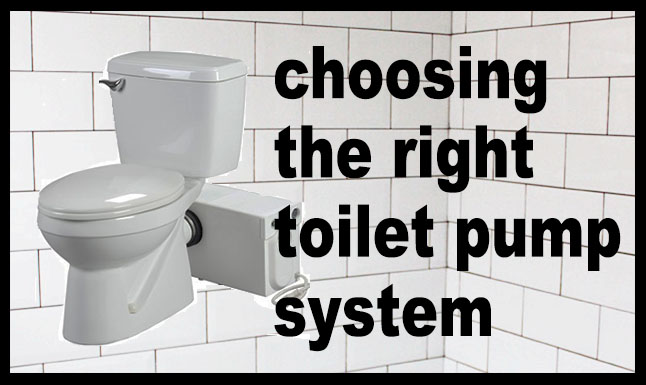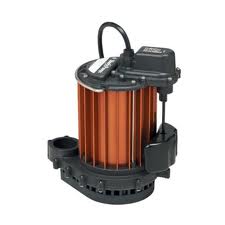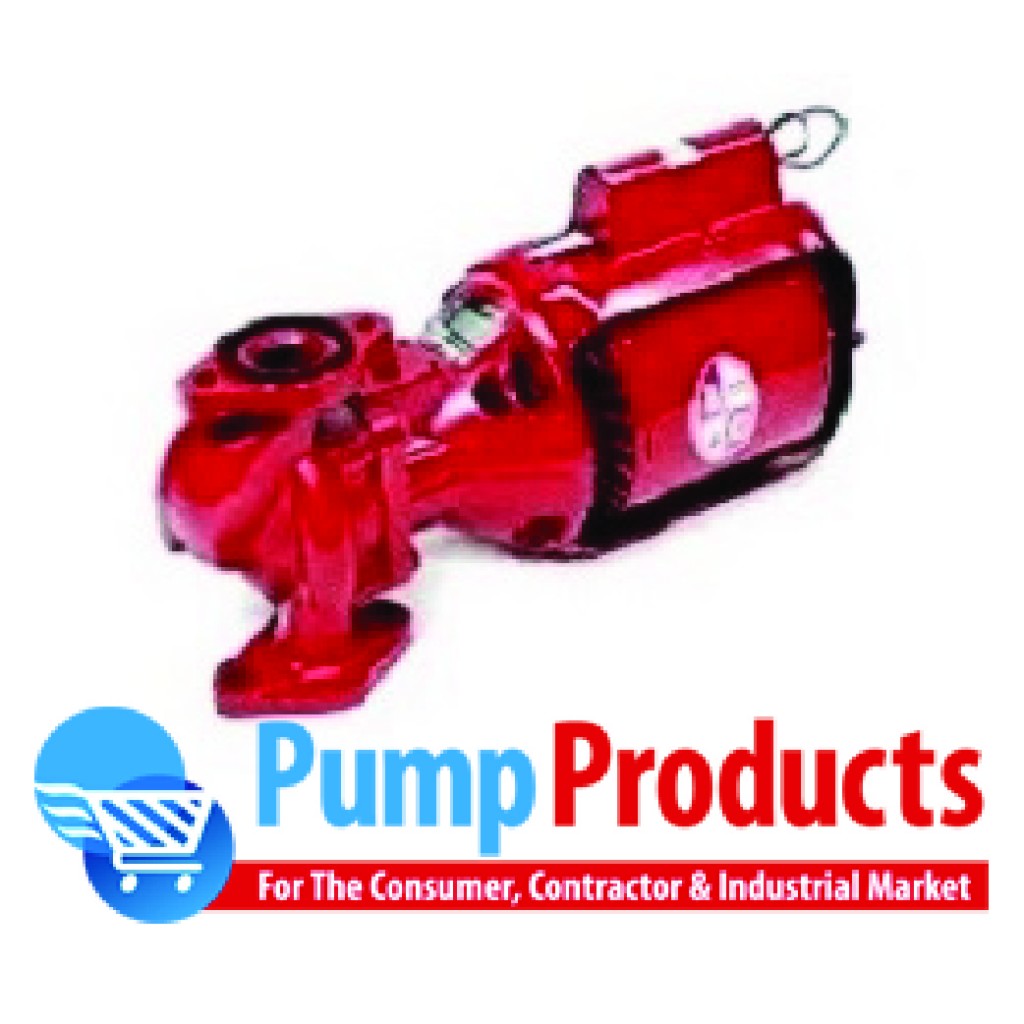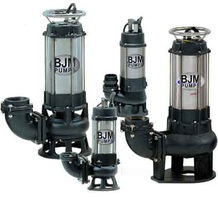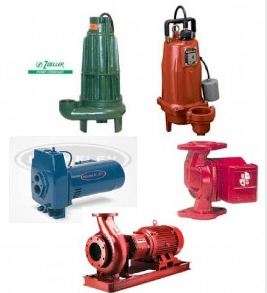-
Water Booster Pump Buyers Guide
February 12, 2013Booster pumps are used to maintain ideal water pressure in tall or high-set buildings and in areas with low or fluctuating water pressure. They are installed at the point where a municipal water line enters a building and are commonly set to run at 30-50 psi. As pressure drops in the tank, the pump draws water from the water supply line, raising pressure in the tank and boosting the water pressure in the building. A typical booster pump system consists of a pump, motor, pressure tank and controller. View our water booster pump video Video used courtesy of Grundfos How To Size a Booster Pump When sizing a booster pump, it is important to measure current water pressure against the amount of pressure a given booster pump can provide. A homeowner looking to boost water pressure from 25 psi to 40 psi will require a booster pump capable of producing 15 psi. Since most pumps are r ated in feet of head, the following formula can be used to convert psi to feet of head: PSI x 2.31 = feet head Feet head x 0.433 = PSI Once the performance requirements of a booster pump have been established, the best pump for the application can be determined. Find out about required maintenance and warranty options. Consider where the pump will be placed as areas of limited access will present maintenance and repair challenges. Consider the configuration and features that are best for your application. Single Stage Booster Pumps are attached to a main water supply pipe from which they draw water into a building water system. Multiple Stage Booster Pumps use centrifugal force to pull the water up into the system. They are often used in connection with underground water supplies in light irrigation applications. Manual Operating Systems require turning on a switch to increase water pressure. Automated Operating Systems monitor the water pressure and turn on when there is a need for more water. For detailed specs, manuals and reviews on the booster pumps we stock and ship nationally, log on to our booster pump page or call us for details: 1-800-429-0800.
-
Sewage Pump Buyers Guide
February 12, 2013When a plumbing system is set lower than a municipal sewer line, sewage pumps are used to pump wastewater from a collection basin up to the main sewer. In septic tank systems sewage pumps often move fluid waste to a leach field. Sewage pumps are designed to pump fluids containing soft solids of up to 2” in diameter. They are submersible and often controlled by float switches that activate the pump when the liquid level in the basin rises. Sewage pumps are rated in horsepower and most models are capable of moving several thousand gallons of fluid per hour. View our Sewage Pump Video Video used courtesy of Liberty Pumps How To Size a Sewage Pump The two main factors to bear in mind when sizing a sewage pump are the volume of sewage to be pumped, generally measured in gallons per minute (gpm), and the height and distance it must be moved (head). Gpm is determined by a pump's horsepower (hp) and will vary according to the vertical distance between the sewage basin and discharge point. In a residential application, a ½ hp pump with a high head will have a lower gpm than one with a low head. Gpm at 20 ft. of head = 200 (gpm) means that the sewage pump can move up to 200 gallons of water per minute if the vertical distance between the sewage basin and the septic tank is 20 feet. (Gallons per hour, or gph, is an alternative measure that can be calculated by multiplying the gpm by 60.) A sewage pump with low horsepower and gpm may cost less but if it must run constantly to meet pumping demands it may not last as long as a more powerful pump that will not have to run as often. When selecting a sewage pump you should estimate the demands you will be putting on it as closely as possible. A pump that is properly sized will result in the longest possible life. SPECIAL FEATURES Thermal Overload Protection is a feature that helps to extend the life of a sewage pump by automatically shutting off when the pump’s internal temperature reaches a critical level. Packaged Sewage Pump Systems include a sewage pump, basin and piping along with all of the other components necessary for home sewage disposal bundled into one package. For detailed specs, manuals and reviews on the sump pumps, battery back-up systems, combination systems and water powered systems we stock and ship nationally, visit our product pages at www.pumpproducts.com or call us for details: 1-800-429-0800.
-
Irrigation Pump Buyers Guide
February 12, 2013Irrigation pumps are manufactured in a wide range of designs including centrifugal, submersible, jet and propeller models. They are used in domestic lawn sprinkling and water boosting applications as well as in large-scale agriculture and fire prevention. Irrigation pumps can draw on a municipal water supply or natural source such as a lake or pond and are available in electric or gas-fueled models. View our Irrigation Pump Video Video courtesy of learnengineering.org Choosing the Right Irrigation Pump Properly sizing an irrigation pump involves measuring your water source pressure (psi) against the flow (gph) and pressure (feet of head) requirements of your watering system and selecting the pump that will most efficiently connect the former to the latter. There are a number of on-line tutorials available to those interested in designing a basic irrigation system that is compatible with local water resources. Professional irrigation services are an option for applications with complex requirements. When it comes to selecting the pump at the center of the equation, pump curves are a good place to start. Pump curves are issued by pump manufacturers to illustrate a pump’s performance over a range of pressures and flows in feet of head and psi. The shape of a pump curve varies according a pump’s design. Pump efficiency is maximal at a particular combination of discharge and head and then drops below the maximum as the discharge rate increases. The objective is to select the pump with highest efficiency at the flow rate and pressure conditions required by your system. As a general rule, pumps with electric motors are driven at either 1750 or 3500 rpm (½ to 2 hp). Models driven at 1750 rpm are capable of lower head but higher discharge than those driven at 3500 rpm. IRRIGATION PUMP TYPES Centrifugal Pumps are commonly used for domestic irrigation because they can draw on water sources ranging from a municipal water supply to a creek and can deliver constant flow rates under a wide range of conditions. They move water through suction force generated by a rapidly spinning impeller and must be filled with water to remove air, or primed, in order to operate. The above video provides a detailed explanation of how a centifugal irrigation pump operates. Submersible Pumps operate underwater, often pushing water up from inside a well, and are commonly used in pressure boosting applications. What they lack in versatility they make up for in efficiency. Submersible pumps do not need to be primed and run quietly. Jet Pumps are terrestrial pumps with submersible components that make them ideal for applications with fluctuating water levels. A jet pump operates by directing water down an intake to cause water lift. Jet pumps do not need to be primed. Propeller Pumps use a propeller to move large amounts of water at low heads. Propeller pumps are among the smallest irrigation pumps. FEATURES Self Priming pumps don't require manual priming, which often involves pouring buckets of water down into the pump and pipe which can be a slow and messy process. A Flow Switch can be used with a booster pump to activate the pump and bring pressure up to an acceptable level when low water flow is detected in the pipes. A Timer makes it possible to save money by automatically watering a lawn during off-peak hours. They can also be set to operate when you're at work or away on vacation. A Pressure Switch helps to maintain a pump’s peak efficiency by turning it on when pressure in pipes is too low and turning it off when pressure is too high. Corrosion Resistance helps to ensure that pumps continue to function properly long after they are installed. This is an important feature in submersible pumps. For detailed specs, manuals and reviews on the irrigation pumps we stock and ship nationally, visit our irrigation pump product pages or call us for details: 1-800-429-0800.
-
Trash Pump Buyers Guide & Review
February 11, 2013Trash pumps are the cannons of the pump world, designed to transfer large volumes of liquid laden with dirt, sludge, leaves, twigs and other solids. Trash pumps do not grind down the solids that pass through them but, rather, pass them along intact. They are portable, heavy-duty pumps with deep impeller vanes capable of producing flows up to 1,600 gallons per minute (gpm) at heads up to 150-feet. Trash pumps can handle spherical solids up to half the diameter of their suction inlets, which generally range from 2 to 6-inches. They are powered by high horsepower engines that run on electricity, gasoline and diesel. Trash pumps are available in centrifugal and diaphragm designs. View our trash pump video Video used courtesy of Gorman Rupp Choosing the Right Trash Pump Centrifugal Trash Pumps operate by using a rotating impeller to draw water into the pump. The impeller is generally a cast iron, two-vane design with a large volute to handle high volumes of water and debris. Centrifugal trash pumps can pump water with a solids content of up to 25%. They are used in applications ranging from draining ponds to flood water removal and typically come equipped with a protective frame that enhances their mobility and reinforces them for rugged jobsite conditions. Diaphragm Trash Pumps function through the expansion and contraction of a flexible diaphragm that acts like a piston in an engine, alternately drawing in then pushing out debris-laden water. Diaphragm trash pumps provide the low rate of discharge and head of any large, heavy-duty pump. They can handle air without losing their prime and can pump water with solids content greater than 25%. Diaphragm pumps are commonly used in slow-seepage applications where high-discharge centrifugal pumps would quickly lose their prime, such as those occurring when groundwater seeps into a pit. TRASH PUMP FEATURES Electric Trash Pumps are often used in applications where electrical power is available. Gasoline Powered Trash Pumps are popular for applications in which electrical power has failed or is absent. They form the largest selling category of trash pumps available with 2 to 6-inch inlets. Diesel Powered trash pumps are comparable in size and weight to gasoline-powered models and are used in many of the same applications. They offer the added advantage of fuel economy. A Suction Hose is a reinforced hose through which water flows into the suction end of a trash pump. A Discharge Hose is a hose through which water flows out of the discharge end of a trash pump. A Suction Strainer is placed over a trash pump suction hose in order to prevent large debris from entering the pump and creating a blockage. Wheel Kits and trailer mounts enhance the mobility of trash pumps. For detailed specs, manuals and reviews on the electric, gasoline and diesel powered trash pumps we stock and ship nationally, visit our products pages or call us for details: 1-800-429-0800.
-
Well Pump Buyers Guide
February 8, 2013Well pumps are used to deliver water from a well to a home that is not connected to a municipal water supply. They are also used for small-scale irrigation and livestock watering. Well pumps are available in shallow, deep well convertible, and submersible designs. Choosing the Right Well Pump Shallow Well Jet Pumps use centrifugal force to create suction and draw water up from a well in areas where the water table is located less than 25 feet below the ground. They are electrically powered and commonly mounted on pressure tanks. Because they use water to draw water, shallow well pumps must be primed in order to operate. A check valve in the pump’s feed line prevents water from flowing backwards. Convertible Deep Well Jet Pumps are used in applications where water is located more than 25 feet underground. These pumps sit above ground but are equipped with a submersible jet ejector assembly that can be used to increase their operating depth to about 90 feet. A foot valve facilitates pump priming and keeps water from flowing backwards. Deep Well Submersible Pumps are commonly used in applications deeper than 90 feet. These pumps are submerged in a well and pump water up through a single pipe connected to a pressure tank. They are more efficient than jet pumps but can be harder to maintain as pump or motor problems often require pulling the unit up to ground level for repairs. In general, submersibles can function for 20 to 25 years without servicing. SIZING A WELL PUMP The size of a well pump directly affects its efficiency, lifespan and ultimate cost. An undersized pump will result in low water pressure, while an oversized model will consume more energy than necessary. Both scenarios will result in excessive wear on the system. To correctly size a well pump you must determine: • The water pressure required (psi). • The level of your water source. • The rate of water source replenishment in gallons per minute (gpm) • The total number of stories the water will be pumped (vertical lift). • The amount of water the pump must deliver during peak hours in gpm. Assuming all of the parameters fall within a normal range, a two-storey, two bathroom residential system with an average demand of about 12 gpm can generally function with a ½ horsepower (hp) well pump. Larger applications of 15 gpm or more will require a more powerful pump. WELL PUMP FEATURES A pressure tank helps maintain even water pressure. A check valve keeps water from flowing backwards in shallow well jet pumps. A foot valve keeps water from flowing backwards in convertible well pumps. Thermal and overload protection prevents motor burnout. A booster increases (psi) in shallow well pumps to maintain consistent water pressure. For detailed specs, manuals and reviews on the shallow well, deep well and submersible well pumps we stock and ship nationally, check out our product pages at www.pumpproducts.com or call us for details: 1-800-429-0800.
-
Toilet Pump System Buyers Guide
February 8, 2013A toilet pump system is a free-standing sewage ejector system in which a self-contained pump and tank unit forms the foundation for an “instant” bathroom that can be installed in a basement, garage or any other room where a permanent bathroom is either unpractical or unnecessary. These compact systems are designed for free-standing installation in small spaces and provide an alternative to the hassle and expense of full bathroom construction. View our toilet pump system video < Video used courtesy of Liberty Pumps How to Choose the Right Toilet Pump System When choosing a toilet pump system, it's important to examine the pipes in the area targeted for installation and to determine the type of drain connection that will be used. A pump toilet system can provide an economical, do-it-yourself alternative to a bathroom construction project but a complicated installation may call for the services of a plumbing professional, adding installation fees to the overall cost of the unit. Toilet pump systems are available in configurations suited to different applications. Up-flushing Toilets, also known as macerating toilets, consist of a grinder unit installed behind a rear discharge toilet. Wastewater is piped up and out using a home’s water pressure and waste piping. Free-Standing Sewage Ejector Systems are self-contained pump & tank units that include a solids-handling sewage pump, piping and a switch. Many models can be piped behind a wall to conceal the pump compartment and can accommodate wastewater funneled from a toilet, sink and tub/shower. Wastewater Package Systems provide the most powerful and permanent option for home wastewater disposal. These systems consist of a sewage pump in a pit basin beneath the bathroom that pumps wastewater out to a municipal sewer line. For more information on these systems visit our sewage pump page. For detailed specs, manuals and reviews on the toilet pump systems we stock and ship nationally, check out our product pages or call us for details: 1-800-429-0800.
-
Sump Pump Buyers Guide
February 8, 2013A sump pump is like an old friend you don’t see often but who’s always ready to bail you out of a jam. Sump pumps operate in basement sump pits where rain and groundwater collect during storms. Their job is to pump water out (usually to a drainage area located at least 20 feet away) and keep building interiors dry. If you find yourself in a flood-prone area in the middle of a storm, the right sump pump can be the best friend you have. View our sump pump video Choosing the Right Sump Pump: Submersible vs. Pedestal Sump pumps are available in submersible and pedestal designs. In general, the size of a sump pit will determine the configuration that's best for it. Submersible pumps are placed in large sump pits and can operate submerged in water. Their motors are moisture sealed and encased within the pump body. They are self-cooling and run more quietly than pedestal pumps. Pedestal pumps have external motors that run outside of a sump pit while the pump drains water below. They require less space than submersible models but can also be less efficient in pumping water with suspended solids. HOW TO SIZE A SUMP PUMP To determine the horsepower of the pump you need, drop a tape measure in your sump pit during the next rain storm and measure the amount of water that accumulates in one minute. One inch of water in one minute is roughly equivalent to one gallon in a standard 18" pit. In a pit that's 24" in diameter, the volume doubles. Multiply by 60 to determine the number of gallons your pump will have to move per hour. Sump pump strength is measured in horsepower. 1/3 horsepower is sufficient for most homes but may fall short in extreme conditions. Homeowners in areas prone to flooding might consider a pump with a more powerful 1/2 horsepower motor, bearing in mind that larger pumps cost more and wear out sooner than small ones. PUMP TYPES, POWER SOURCES Once you determine the type and capacity of the sump pump you need, consider your energy source. Electrically Powered Most primary sump pumps are electrically powered. Unfortunately, an electrically powered sump pump will stop working if the power goes out during a storm. Battery Back-Up Power A battery back-up pump will kick in if the primary pump stops working due to power failure or breakdown. Just as a primary sump pump will not run without power, a battery-operated unit will not operate without a battery. Some battery back-up pumps run on deep-cycle maintenance-free marine batteries while others run on traditional acid batteries. These require the occasional addition of water. Combination Systems By bundling an electrical primary pump with a battery back –up unit, combination systems provide all-around flood protection. If the power goes down, or the primary pump is overwhelmed, the backup sump pump will begin pumping automatically. Water Powered Because they don’t run on electricity or batteries, water powered pumps are maintenance-free. However, they are only appropriate for homes with a consistent (40-100psi) municipal water supply and should not be used with electrically powered well water systems or to substitute a primary basement sump pump system. Oil-Detecting Systems are electrically powered pumps used primarily in elevator pits and transformer vaults. They are designed to differentiate between oil and water, pumping only water and leaving oil out of discharge for safe draining. SPECIAL FEATURES Sump pumps are manufactured in materials ranging from durable cast iron to corrosion-resistant thermoplastic. They are also available with a variety of useful features. Alarms are designed to sound an alert when water reaches a problematic level or a pump stops working. Float Switches activate a pump when water reaches a pre-determined level. They are available in vertical, tethered and pressure varieties. Silent Check Valves eliminate the noise that results when a sump pump shuts off and the check valve closes. They are sometimes referred to as klunkless valves. For detailed specs, manuals and reviews on the sumps pumps, battery back-up systems, combinations systems and water powered systems we stock and ship nationally, visit our product pages at www.pumpproducts.com or call us for details: 1-800-429-0800.
-
Pump Products Launches E-Commerce Store, Brings Pumping Power to the People
February 8, 2013Pump Products, a leading national distributor of pumping equipment for residential, commercial and industrial clients, will launch a new e-commerce store in Fall 2013. The new retail site, to be called Pumpproducts.com, will extend a large stock of pumps and pump parts to on-line shoppers and provide easy access to essential information on top brand models and lines. As part of an ongoing effort to enhance the availability of pumping equipment, services and information to customers world-wide, Pumpproducts.com will set the standard for informative, functional and secure consumer pump sales via the internet. “We built our business by bridging the gap between the industry’s leading pump manufacturers and customers looking for the pump productsbest suited to their needs. We did this through a staff skilled in pump sizing and selection that could provide quick access to pumps for every application,” says General Manager Ed Drejman. “We remain committed to offering customers support and quick delivery, particularly in the commercial and industrial sectors where there is a strong demand for engineered pumps not sold directly to the public. The new e-commerce site will be geared to the light commercial and residential customer who is searching for Armstrong, Bell & Gossett, Berkeley, Grundfos or other top brand pumps by name or wants to bone up on his or her options and shop around for the best price. We are positioning PumpProducts.com as the go-to site for that customer.” The new site features a clean user interface allowing customers to have as in-depth an experience as they choose. It was developed to facilitate browsing and maximize search ease. Filters and sub-menus will enable shoppers to view pumps by brand, grade, style and other criteria. Along with a keyword search the new site will feature search selectors corresponding with casing material, horsepower, connection type and a dozen other criteria. Original product photos and an extensive video library will help to illustrate detailed product descriptions. In addition to customer reviews PumpProducts.com with feature Q & A pages and Buyer’s Guides. “We supply a great many customers who want to help themselves,” says General Manager Ed Drejman.“The site was designed to provide all the information necessary to make an informed pump purchase. By eliminating the overhead associated with a brick-and-mortar business, we were able to take our web presence to the next level and focus on developing a rich, multi-layered retail site that’s easy to maneuver and provides clear, detailed information on sump pumps, sewage pumps, hot water pumps, HVAC circulators and a wide variety of other pump types along with their corresponding parts and accessories. In terms of content, user experience and cost competitiveness the new e-commerce store will be hard to beat.” Set to launch in November 2013, PumpProducts.com, will join PumpExpressServices.com as part of the Pump Express family of businesses which provide pumps, motors, repair parts and pump-related services to customers across the United States. Equipped with more than 500,000 square feet of warehouse space, PumpProducts.com will be a leading Northeast stocking supplier of pumps by Armstrong, Bell & Gossett, Berkeley, Grundfos, Little Giant, Taco, Liberty, Zoeller, PHCC Pro Series and other leading manufacturers along with a wide range of top brand motors and generators.
-
Shredder Pump Buyers Guide
February 6, 2013A shredder pump is a submersible wastewater pump designed to shear rags, plastic bags and other solids that would clog an ordinary sewer ejector pump. These pumps use a cutting impeller to whittle solids down to a consistency that a wastewater system can easily handle. Cutting action occurs only when solids are present, otherwise shredder pumps operate like submersible sewage pumps. Watch Our Shredder Pump Video CLICK HERE TO VIEW OUR CATALOG OF SHREDDER PUMPS Applications include sewage pump stations, septic systems, commercial and industrial sewage injector systems, hotels, construction sites and other applications requiring the reduction of difficult solids. Shredder pumps are more common today than they were before plastics began to dominate the disposable consumer goods market. In the past, most sanitary products were made of cotton and paper, which disintegrate in water and create little resistance when passing through a wastewater disposal system. Today, many of those products are made of plastics, which remain intact and stretch rather than tear when passing through a system, often creating a “net” that traps other debris. If your sewage ejector system is subject to frequent clogging, you probably need a shredder pump. Today’s powerful shredders will grind down items ranging from cell phones to sneakers. How To Select the Right Shredder Pump When choosing a shredder pump it's important to consider the application it will be used in. Submersible Shredder Pumps, also known as cutter pumps, will shear down problematic debris to a size most wastewater systems can process. They are designed for high flow, low head applications up to about 50 feet. For lower flow, high head conditions 50-150 feet, grinder pumps provide another option. High Temperature Shredder Pumps will run in liquids that are too hot for conventionally built submersible pumps. High temperature shredders normally operate in temperatures between 140-200 °F. They are constructed of heat and corrosion-resistant materials and are a popular choice in process applications and those involving boiler blow-down. Explosion-Proof Shredder Pumps are designed for use in combustible gas environments such as municipal and industrial wastewater facilities. They are constructed of durable, flame-resistant materials and contain motors super-reinforced to protect them from contact with liquids and abrasive materials. For detailed specs, manuals and reviews on the shredder pumps, parts and accessories we stock and ship nationally, visit our product pages at www.pumpproducts.com or call us for details: 1-800-429-0800.
-
PUMP BUYERS GUIDE
February 6, 2013Because they tend to operate out of sight, the pumps we use every day often go unnoticed. It isn't until we experience a breakdown and need to replace a pump that’s necessary to wash clothes, heat our home or drain a flooded basement that most of us realize how little we know about pumps and how to evaluate them. KEY TERMS TO UNDERSTAND WHEN CHOOSING A PUMP PUMP SPECIFICATIONS PRESSURE - The force delivered at a given point in a pump’s discharge line, usually measured in pounds per square inch (psi). LIFT - The number of feet that fluid needs to be lifted for removal. Correctly sizing a pump for lift is important for that pump's longevity and energy efficiency. HEAD - The height at which a pump can no longer exert enough pressure to move water. The higher the head pressure, the more powerful a pump is. FLOW - The volume of liquid a pump can move. The objective is to achieve the best possible balance between the size of the outflow pipe and the speed at which you want fluid to flow through it. POWER SOURCES When choosing a pump it's important to consider your energy source. Most pumps are manufactured to run on one of the following power sources: Electricity - The vast majority of pumps are electrically powered. Gasoline - Gas-powered pumps are often portable and employed in situations where electrical power has failed or is absent. Diesel - Applied much as gas-powered pumps are, though diesel fuel generally offers better fuel efficiency than gas. Water - Water powered pumps run on a home or municipal water supply and will operate as needed for an unlimited amount of time. Compressed Air - Air operated pumps are positive displacement pumps driven by compressed air. They are used in a wide range of applications. Sunlight - Solar powered pumps are ideal for sunny areas. They are clean, energy efficient and usually require very little maintenance. MATERIALS The life of a pump depends on the ability of the materials it is made from to withstand the demands of the pumping environment. Pumps are available in a variety of materials suited to varied conditions: Metals (bronze, cast iron, stainless steel) are a commonly used for pumps that operate in conditions requiring durability, resistance to high temperatures or abrasive resistance. Non-metals (thermoplastics, composites) are useful for applications requiring chemical or corrosion resistance. PUMP TYPES After you determine the pressure, lift, head and flow demands you will be putting on a pump, you can choose from a variety of configurations suited to different applications. Submersible Pumps are designed to work while immersed in the fluid they are moving. A sump pump is a common type of submersible pump, as are grinder and shredder pumps. Centrifugal Pumps employ an impeller to push liquids out through a system. A recirculating pump used to speed hot water to a kitchen sink or showerhead is an example of a centrifugal pump. Diaphragm Pumps house a membrane that undulates to create steady, consistent flow. The engine-driven trash pumps commonly used to remove mud, sewage and wastewater in municipal and industrial settings are often diaphragm pumps. Once performance and configuration demands are determined, you must decide on the best type of pump for your application. Click here for a comprehensive listing of common types of pumps currently on the market. Most pump manufacturers produce popular types of pumps with special features that make them especially well-suited to various conditions. SPECIAL FEATURES Self-Priming pumps require no manual supplying of fluid to the pumping chamber and are therefore easy to maintain and convenient to operate. They are ideal for tight spaces and other applications in which access is difficult or inconvenient. Adjustable Speed increases a pump's efficiency by making it adaptable to an application's changing demands. Variable speed pumps are a good choice for applications such as starter homes, which are prone to expanding performance demands. Battery Back-ups provide emergency power in the event of a power outage. Most commonly associated with sump pumps, battery backup systems are a form of low cost insurance in flood-prone applications. Alarms are designed to sound an alert when water reaches a problematic level or a pump stops working. An alarm lets you know when you should service your pump. Corrosion Resistance helps to extend the life of a pump. If a pump is placed in or around water, or moves hot or abrasive liquids, corrosion resistant construction, such as stainless steel housing and high temperature seals, will enable it to run longer and require less maintenance. These are the basics when it comes to choosing the right pump. For detailed specs, manuals and reviews on hundreds of quality pumps by top-brand manufacturers explore the many interactive pages on PumpProducts.com. For detailed specs, manuals and reviews on the pumps, pump parts and accessories we stock and ship nationally, log on to our product pages at www.pumpproducts.com or call us for details: 1-800-429-0800.


